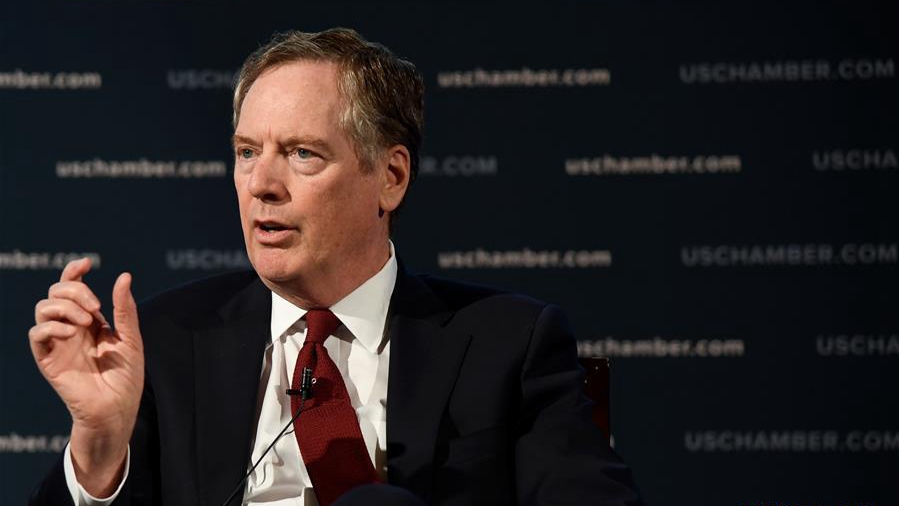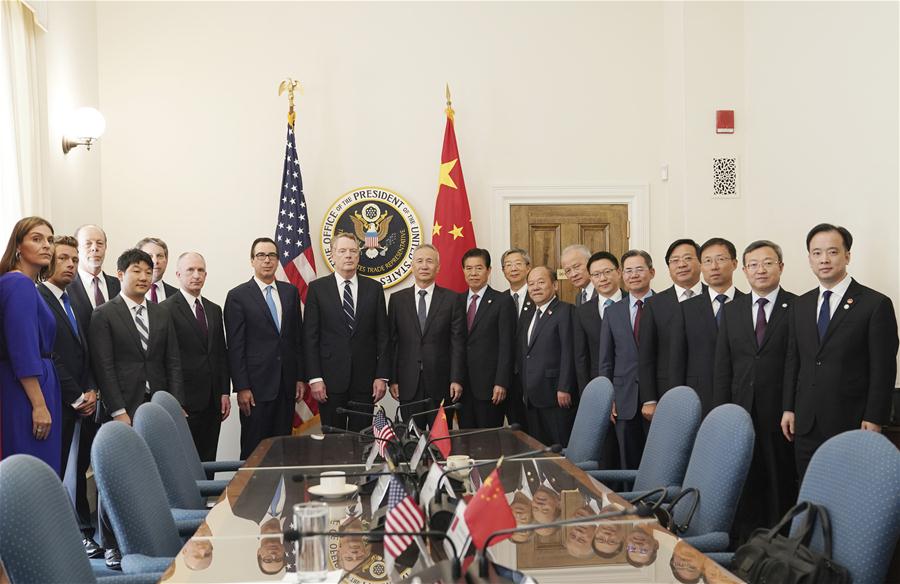
U.S. Trade Representative Robert Lighthizer speaks at an event hosted by the U.S. Chamber of Commerce in Washington D.C., U.S., May 1, 2018. /Xinhua
U.S. Trade Representative Robert Lighthizer speaks at an event hosted by the U.S. Chamber of Commerce in Washington D.C., U.S., May 1, 2018. /Xinhua
Editor's note: Dr. John Gong is a professor at the University of International Business and Economics and a research fellow at the Academy of China Open Economy Studies, University of International Business and Economics (UIBE). The article reflects the author's views, and not necessarily those of CGTN.
United States Trade Representative Ambassador Robert Lighthizer's five-point WTO reform proposal in an op-ed article published in the Wall Street Journal on August 21 pretty much reflects his longtime grudges against the WTO as an American trade lawyer, and his line of thinking has also been driving much of the Trump administration's trade policy so far. However, the issues he identified have some merits.
Lighthizer identified five issues. First, he advocates a universal baseline set of tariffs similar to the average in industrialized countries that will be applied to practically all countries, presumably barring only a few really poor countries. This proposal would probably not face much resistance from China, as the country's average tariff rates have already come down a great deal, and also because it is the world's largest exporter and loves low tariffs. But when it comes to many developing countries that still count on tariffs as a significant revenue source and a means of protecting uncompetitive domestic industries, good luck, my friend.
Second, Lighthizer shows some disdain, surprisingly, for bilateral and multilateral trade agreements that promise better treatments than at the WTO. "Except for agreements intended to foster regional integration among contiguous states – like those governing trade within the EU or the U.S.-Mexico-Canada Agreement – WTO members should be required to extend genuine, unconditional most-favored-nation treatment to one another," he wrote. This is also a position that should not annoy Beijing too much. China has many contiguous neighbors and trade with countries in Northeast Asia and South East Asia account for a large chunk of the country's total trade volume.

Chinese Vice Premier Liu He, also a member of the Political Bureau of the Communist Party of China Central Committee and chief of the Chinese side of the China-U.S. comprehensive economic dialogue, attends a new round of high-level economic and trade consultations together with U.S. Trade Representative Robert Lighthizer and Treasury Secretary Steven Mnuchin in Washington D.C., U.S., October 10, 2019. /Xinhua
Chinese Vice Premier Liu He, also a member of the Political Bureau of the Communist Party of China Central Committee and chief of the Chinese side of the China-U.S. comprehensive economic dialogue, attends a new round of high-level economic and trade consultations together with U.S. Trade Representative Robert Lighthizer and Treasury Secretary Steven Mnuchin in Washington D.C., U.S., October 10, 2019. /Xinhua
The third issue is essentially a development status classification issue. Less-developed countries presently have access to some special and differential treatment. He particularly calls out China and India that should follow the same sets of rules as applied to the U.S., EU and Japan. However, it is pretty certain that India will object. China is mostly likely also going to object, because objectively the levels of development still vary widely between China and the U.S., let alone India and some other developing countries. For example, China's GDP per capita is only one sixth of that of the U.S. Even one of the most advanced cities in China, such as Shenzhen, has a GDP per capita of about 30,000 U.S. dollars – only half of that in the U.S.
It is likely that China is probably less willing to haggle over this issue several years down the road if a comprehensive long-term trade truce can be reached with Washington.
The fourth issue Lighthizer raised is squarely against so-called China's state capitalism, which I would vehemently reject. The differences between China's development model and the models in many industrialized countries are quite blurred – they are a matter of degree as opposed to a matter of if, and more importantly, should not constitute as irreconcilable conditions for China being a large trading nation with the rest of the world. The things Lighthizer mentioned, such as state-owned enterprises and government subsidies, also exist widely in Europe and in the U.S. too. These China-specific issues can be worked out in negotiations.
Finally, Lighthizer rants about WTO's dispute-settlement system, which is one of WTO's two most important pillars. Essentially, he is arguing that the appellate body should not function as a precedent-thus-case-law-setting judicial entity but as a commercial arbitration entity, in which "ad-hoc tribunals are impaneled and resolve particular disputes in an expeditious manner. The rulings of these one-off panels should apply only to the parties in the dispute, and not become part of an ever-evolving body of free-trade jurisprudence." This again is an issue that doesn't and shouldn't involve China's core economic interests and can be something to consider and accommodate.
Overall, the message from Lighthizer makes some sense even amid his role as an anti-China trade war architect. Given the inevitable prospect of the WTO reform that absolutely needs to involve Washington, some of his suggestions need to be studied and analyzed. But the problem is he is running out of time. With the pending meltdown of the Trump administration in the November election, Lighthizer is probably secretly circulating his resume for his next job right now.
(If you want to contribute and have specific expertise, please contact us at opinions@cgtn.com.)